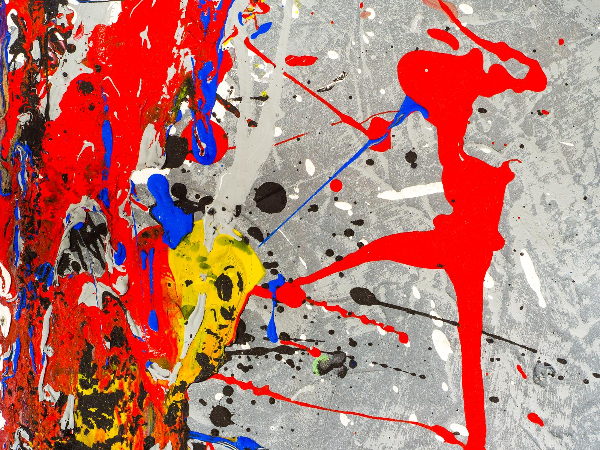Listen to this blog
Expressionism is a general label for a number of early-20th-century artistic styles that were each based upon heightened and extreme emotional expression. It is typically explained as an attempt to reflect experience in an almost abstract way so as to elevate above everyday life, rather than trying to imitate reality or depict certain scenes.
How did expressionism become a powerful movement?
Expressionism was a cultural phenomenon that started in Germany but spread to the rest of Europe and the world. This cultural movement began during the aftermath of the first world war (1914-1918). The reason for this was the destruction left by the war. Artists and writers began to express their anger, sadness, and angst. Expressionism developed as a reaction to traditional art forms. Artists wanted to create artwork that was free of the rules of past movements. Expressionists used bold colours, distorted shapes, and abstract forms to express their feelings. They believed their works should be displayed in a way that emphasised the artist’s emotions and beliefs.
Was expressionism just an artistic expression?
Expressionism was more than just an artistic expression. In fact, it was a powerful ideology that attempted to convey very profound and serious ideas. Expressionist artists were greatly affected by the devastating wars and revolutions of the 20th century. They expressed their strong emotions and opinions through their art. In this way, they were able to express their feelings in a way that would resonate with others. In addition, expressionism was fuelled by the belief that expression could convey truth. Expressionists believed that true art had the ability to convey deep and powerful emotions. They wanted art to resonate with the masses. As a result, expressionism became an important artistic movement that affected many different countries.
What made expressionism so radical?
Expressionism was a revolutionary movement in art. It represented a radical artistic response to the horrors of World War I. Expressionists were reacting to the disillusionment and lack of hope that had pervaded society after so much destruction. The movement was unique because it broke with tradition and rejected realism. As a result, it achieved widespread popularity, especially in Germany. The movement was characterised by abstraction, distortion, and intense emotionalism. Expressionists were influenced by the likes of Vincent Van Gogh, Edvard Munch, and Paul Klee. They believed that art should capture and express subjective experience rather than copy reality. Artists like Marc Chagall, Wassily Kandinsky, and Emil Nolde began using vivid colours to convey emotions and create three-dimensional paintings. Such painters rejected the banality of industrial society and focused on unspoiled nature. The artists expressed their emotions through their use of colour and their brushwork. Expressionism energised the art world and inspired the development of other movements, including Dadaism and Surrealism.
Who was a pioneer and influential figure of the Expressionism movement?
The first curator for German expressionism was Franz Marc. He focused on depicting the struggle between humans and the environment. He paints animals in tense, uncivilized situations. His use of bright colors and distorted shapes contributes to his style, which later influence many other artists. In 1913, Wassily Kandinsky left Russia for Munich, where he begins experimenting with abstraction. He sees the need for an art that speaks directly to the emotions rather than the intellect, which most art of the time was trying to achieve. This would later develop into pure abstract art. Kandinsky combined musicality with color and rhythm, which would later be called synesthesia. His writings and paintings inspired other expressionist painters such as Ernst Ludwig Kirchner and Emil Nolde. The Bauhaus school founded by Walter Gropius in 1919, further developed the style. The school was known for its creative approach to teaching and emphasis on collaboration. It also trained many students to become influential artists. Throughout the 1920s, Weimar Germany saw the rise of many prominent artists including Otto Dix and George Grosz. Their work would inspire the rise of fascism in Germany.
Expressionism paintings
Expressionism is an artistic movement that originated in Germany during World War I. It emphasised the subjective experience and emotions of the artist. The style developed due to artists’ frustration with the prewar era. Most expressionist artists struggled to earn a living before World War I. They painted portraits and landscapes in a realistic manner. Artists used symbolism to convey their thoughts and feelings. Expressionists rejected realism and idealism in favour of emotional self-expression that reflected the modern world. Artists expressed this through their choice of subjects, colours, and shapes, as well as their brushwork and compositions. Subject matter was important in expressionism. Artists focused on images that evoked powerful responses. They depicted people who embodied the ideals of the community. Expressionists used exaggerated colours to represent the emotional intensity of the subject. Artist’s brushstrokes became broad and loose. Artists also drew and painted from a live model so that they could capture the true essence of their subject.
Expressionism compared with Cubism
Expressionism and Cubism are two styles of art that share a similar subject matter – the human form. However, these two art forms differ in how they present these subjects. In Cubism, the artist focuses on deconstructing the human figure into geometric planes. Expressionist artists, on the other hand, depict their subjects as distorted, disjointed, and emotionally expressive. Both Cubism and Expressionism use colour and form to represent emotion, but Expressionism uses a more abstract approach.
What is expressionism painting?
Expressionism is a form of art that portrays emotional experience rather than physical reality. Expressionism became a movement in modern art in the early 20th century and is best known for its distorted forms and intense colours. Expressionist painters, such as Wassily Kandinsky, focused on expressing emotions and inner feelings through colour and form. Expressionist painters included not only fine arts painters but also sculptors, dancers, and poets. Thus, Expressionism is an overarching art movement that includes many different forms of art.
In summary
Expressionism is a style of painting that describes the emotional experience of the subject. Expressionism was a reaction to academic-ism and realism. It was a powerful movement in the art world in the early decades of the twentieth century. It began in Europe around 1905 and continued through the 1920s. Artists such as Cezanne, Gauguin, Van Gogh, and Munch were part of the movement. Expressionism evolved into abstract art. Abstract art is non-representational art. This means that it does not show objects realistically. Instead, artists express emotions and ideas through colour and shapes. Expressionism was a significant movement in the art world. It led to changes in design, architecture, music, dance, film, and literature.




